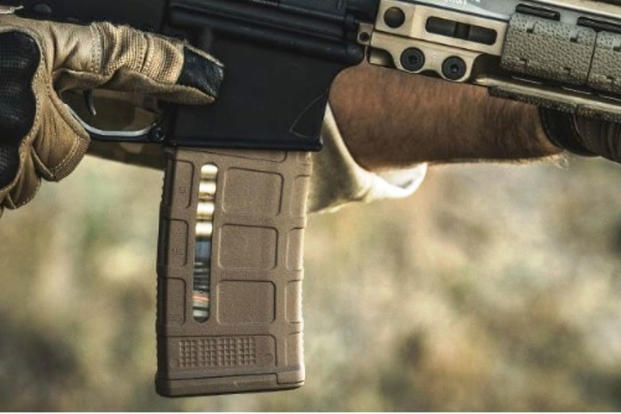LAS VEGAS -- When the Marine Corps announced in December it was authorizing Magpul's PMAG Gen 3 magazine for operational use with the M4, M16 and M27 rifles, the company celebrated the news on its social media accounts.
"In light of the results from an enormous body of reliability and durability testing and 4 years of combat use, today it was announced that the PMAG 30 AR/M4 GEN M3 Window, in Black and Medium Coyote Tan (MCT), would be the official magazine of the entire United States Marine Corps," company staff wrote Dec. 20.
A month later, the full effects of this decision are still becoming clear.
On Wednesday here at SHOT Show, Magpul director of government and international affairs Tray Ardese said a number of international militaries were paying close attention to the news and are considering the popular polymer magazine for official use with their weapons.
"Whatever the Marine Corps buys, there will be trickle-down effect with all the allies," Ardese said. "Because the first thing we got from the overseas guys, was, 'Did the Marine Corps really adopt this?' They were pretty excited. All our NATO partners are looking at it, and several other foreign militaries are pretty close."
To date, no other militaries have made a commitment, Ardese said. But several have requested information about the Marine Corps' decision, as well as data from tests conducted with the PMAG at the Army's Aberdeen proving ground. Combined with other controlled tests, Ardese said, the PMAG demonstrated the ability to fire 60,000 rounds without a stoppage.
According to the Marine Corps bulletin announcing its decision to authorize the PMAG, units are now authorized to requisition the magazines, which retail for $18, using their own funds. Magpul is already receiving small orders from units for the magazines, Ardese said, and waiting to learn what the full impact of the move will be.
"We're still in negotiations on exactly what the Marine Corps needs for magazines," he said. "I think some people are in shock that it actually happened and they didn't really believe it was going to happen. It could be thousands; it could be large numbers, we're not exactly sure yet."
The move authorizing the PMAG reverses a decision by the Corps in 2012 to ban the magazine due to compatibility issues between the first-generation model and the M27 infantry automatic rifle.
At the time, Magpul released a statement explaining that the current Gen 3 version of the PMAG had resolved the prior issues. But the ban remained in place for four more years.
"The Marine Corps and the military in general are creatures of habit," Ardese said. "They had something that they believed worked really well. And they had stuck with it for a really long time … but a metal magazine, there are just some things it can't do that this magazine can. And so, over time, I believe they realized that and pushed all the familiarity out of the way and went to the test data."
To meet the needs of the Corps, Magpul introduced a new color for the magazine, medium coyote tan, which satisfies the services' requirements for an "other-than-black" mag.
The response from active-duty Marines to the decision to authorize the PMAG has spoken for itself. Ardese, a retired Marine officer, said he first learned about the move when someone he knew from his days in the Corps sent him the official message via email. The subject line: "Amazing."
-- Hope Hodge Seck can be reached at hope.seck@military.com. Follow her on Twitter at @HopeSeck.





























